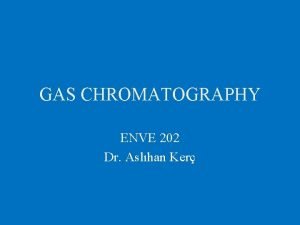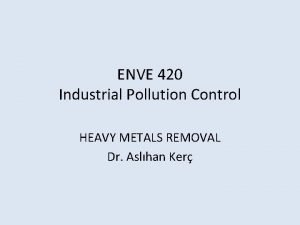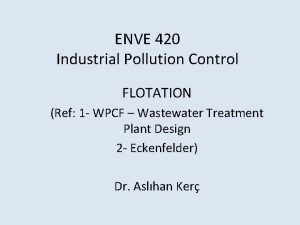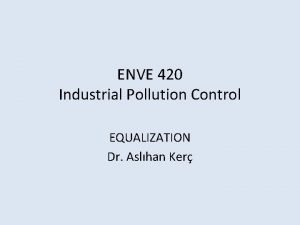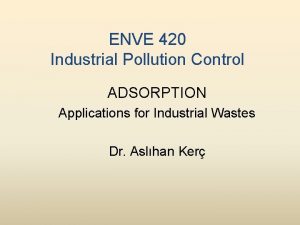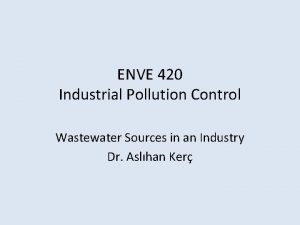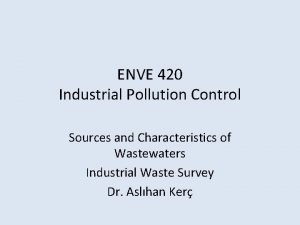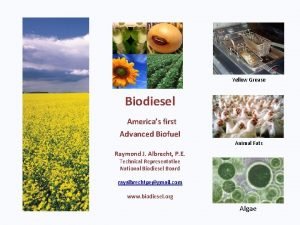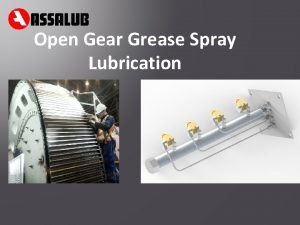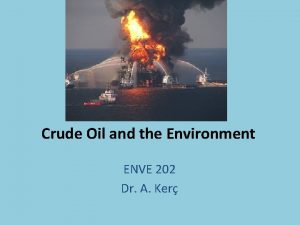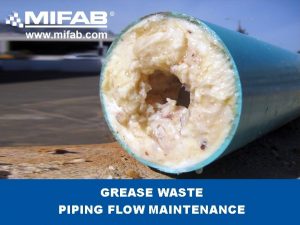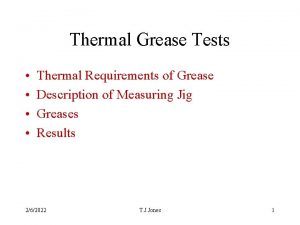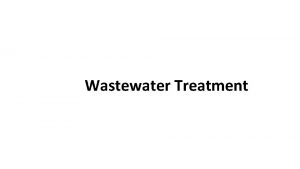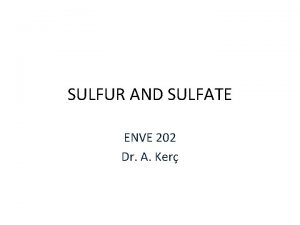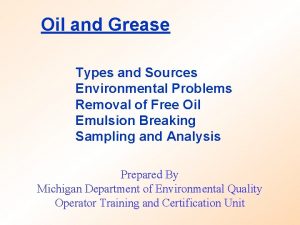Oil and Grease in Wastewater ENVE 202 Dr











- Slides: 11

Oil and Grease in Wastewater ENVE 202 Dr. A. Kerç

* Found in domestic wastewaters & certain industrial wastes * Cause problems during treatment and for ultimate disposal Oil and grease Poorly soluble in water and separate from aqueous phase Advantageous for separation by flotation

Wastewaters from meat packing industry and slaughter houses are high in oil and grease content. Decrease carrying capacity of sewers. Such industries should apply preliminary treatment for the recovery of oil / grease before discharge.

In wastewater treatment plants: Oil/grease separates as scum in primary settling. Sent to sludge treatment with settled solids. In sludge digestion Oil/grease float to the surface and form dense scum layer ( due to poor solubility in water and low specific gravity) All O/G cannot be separated in primary sedimentation. Also remain in the clarified water in a finely emulsified form. During biological attack emulsifying agents are destroyed Fine particles form large particles and separate from water.

Grease accumulates into “grease balls” unsightly appearance to the surface of final settling tank Grease coat the biological forms interfere oxygen transfer

Oil and Grease Measurement O/G are organic substances that are extracted from aqueous solution or suspension by hexane or 1, 1, 2 - trichloro -1, 2, 2 -trifluorethane (Freon-113 or CFC – 113) Hydrocarbons, esters, oils, fats, waxes and highmolecular weight fatty acids dissolved by these solvents

• Hexane Explosion hazard • CFC-113 Currently recommended solvent But it’s a CFC (phased out of production ozone depletion. ) Chloroform, diethyl ether other solvents

• Solvent extraction Do not measure low molecular weight HC (Gasoline do not partition well into the solvent) Require sample drying @1030 C prior to extraction Materials with boiling points below this temperature are lost. Choice of analysis method depends upon the volatility of the contaminants O/G is seldomly measured in clean waters. • Partition-infrared procedure

In domestic ww oils, fats, waxes and fatty acids are classed as O/G Industrial ww oils, fats, waxes, fatty acids and esters * Oil Low to high molecular weight HC (petroleum, heavy fuel, lubricating oils) * Grease Higher molecular weight HC, glycerides of animal and vegetable origin

* Fatty acid Calcium and magnesium soaps Since they’re insoluble in solvents Acidified w/HCl to release free fatty acids for analysis.

Methods for O/G measurement in water and wastewater: -Initial extraction into CFC-113 in partition-gravimetric method CFC 113 separated from water and evaporated use the remaining in the measurement Partition – infrared Extracted materials measured with IR scanning
